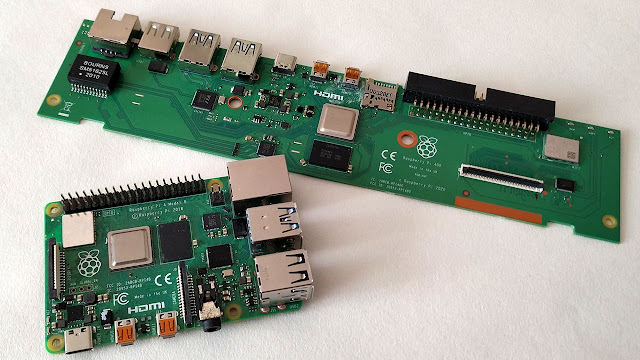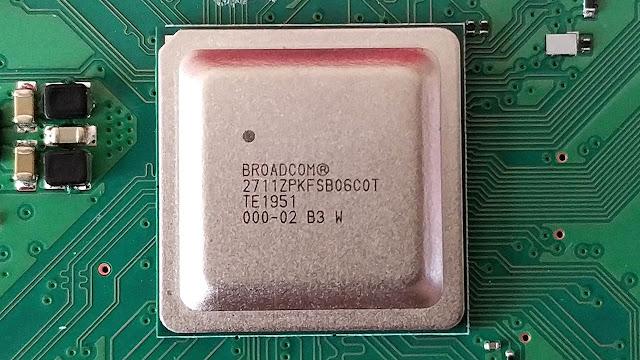All of us who have tracked the Raspberry Pi over the years are aware with the numerous versions of the small board and the new processors that have resulted. What's less evident is that small version updates are common over the lifespan of any chip, generally to address problems or fine-tune production processes. They're the same chip, but with a few additional features. When the Raspberry Pi 400 featured a BCM2711 with a newer update than the Pi 4, [Jeff Geerling] didn't notice, and now he discovers the same chip in Pi 4 boards.
 |
| Source: Tom's Hardware |
According to St Louis-based software developer Jeff Geerling, the Broadcom SoC in the Raspberry Pi 4 Model B has been secretly upgraded to match the one in the Raspberry Pi 400.
Geerling observed the change after purchasing a new Raspberry Pi 4 (8GB) to replace a damaged board and seeing that one of the chip's model numbers had changed. The BCM2711 is the Raspberry Pi's SoC (System on Chip), which houses the CPU, GPU, and the PCIe connection that links the USB ports. Previously, its model number ended in B0T, but Geerling's new baby has a model number that ends in C0T, which corresponds to the SoC used in the Raspberry Pi 400.
It's understandable that Raspberry Pi would do this, given it reduces the number of different chips they have to purchase and manage, and we can presumably anticipate the new model to trickle down throughout the range - indeed, Geerling shows that this is already occurring. The distinction between the two models, on the other hand, is rather subtle. In fact, it's very so. You might call it granular.
What's new in Raspberry Pi Processor Update?
It's just a minor changes which is nothing to call an update. There are two key changes relating to RAM addressing, which allows the PCIe and EMMC2 buses to access more memory than previously (thus why the new chip appears on the Pi 4 with the most RAM) and some "power gating enhancements."
 |
| Source: Tom's Hardware |
Given appropriate cooling, the Pi 400 operates at 1.8GHz, compared to 1.5GHz on the Pi 4 Model B. As a result, the new processor may provide higher overclocking possibilities. Unless you're working on a project that requires access to 8GB of RAM via EMMC2, you're unlikely to see a difference.
Source: Tom's Hardware
Posts You May like:
- Raspberry Pi Introduces a New Documentation Hub
- Quick start with ESP8266 based Pico WiFi HAT
- Capture local Real-Time Air Quality Data with Raspberry Pi Pico
- GitHub CLI 2.0 Is Now Available, With Extension Support
- Connecting Wi-Fi on Raspberry Pi Pico Become Easy
- How To Track All Devices with Raspberry Pi
- Make your own Raspberry Pi Image from scratch
- How to Send phone notifications Using Raspberry Pi Pico?
- Raspberry Pi Pico 4G/2G Expansion : Expectations vs. Reality
- Quick Example to Drive Servo Using Programmable I/O
- How to Use a USB SSD or Flash Drive to Boot a Raspberry Pi 4 / Pi 400
- Filter Ads by your Raspberry Pi Before they Reach your Devices
- A Raspberry Pi 4 Model A Launch 2022 - Eben Upton
- First-Ever 2G Expansion Board for Raspberry Pi Pico has Launched on Kickstarter
- Learn IoT "Internet of Things" with 24 lessons for Teachers and Students
- Quick Guide for Raspberry Pi Users: Raspberry Pi Terminal Commands
- Windows 11 on Raspberry Pi Devices in Easy Installation Guide
- Get Your Project Done by Raspberry Pi Approved Design Partners
- PiRelay 8 Smart Relay Board for Raspberry Pi - Kickstarter
- Tiny Round/Circular LCD Display Launched!
- Issue Fixed! USB Boot Ubuntu Server 20.04 on Raspberry Pi 4
- HC-SR04 Sensor with micro-ROS on the Raspberry Pi Pico
- Raspberry Pi Pico: ADC Sampling and FFT
- Using CircuitPython for RP2040
- How to Setup Pico RP2040 on Windows
- Using micro-ROS on the Raspberry Pi Pico
- LED Tricks Using The Raspberry Pi Pico
- The RP2040 Raspberry Pi Pico Meets LoRa
- Pico supports SD cards and FatFS
- How to connect a Raspberry Pi Pico to LoRaWAN
- 50 Raspberry Pi Hacks & Tips You Should Know
- How to Install Wi-Fi and Internet...